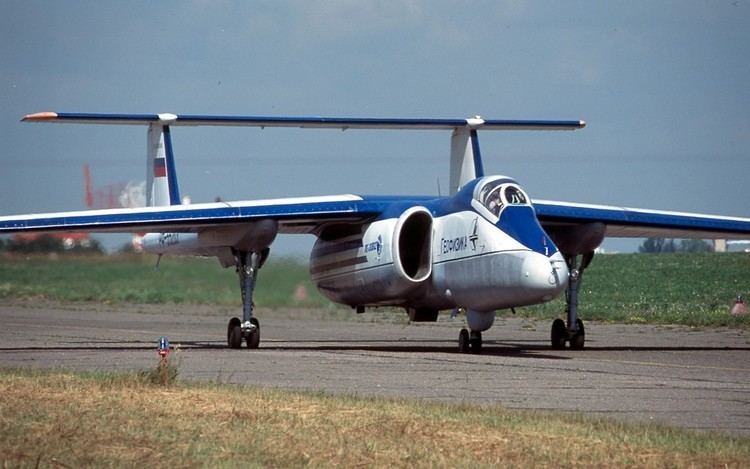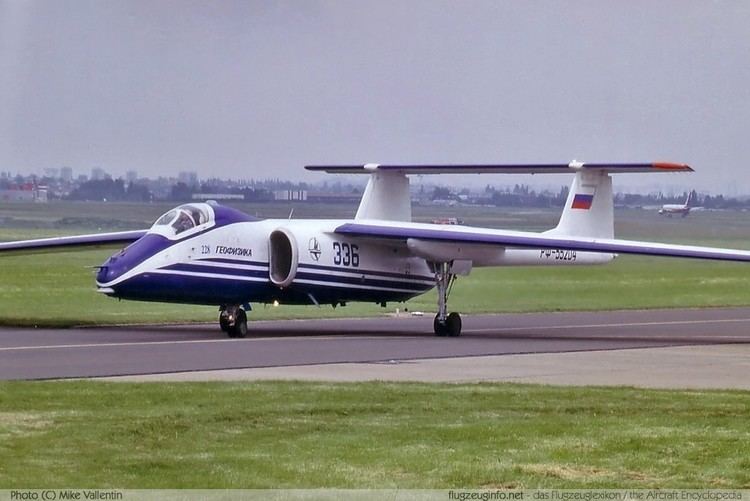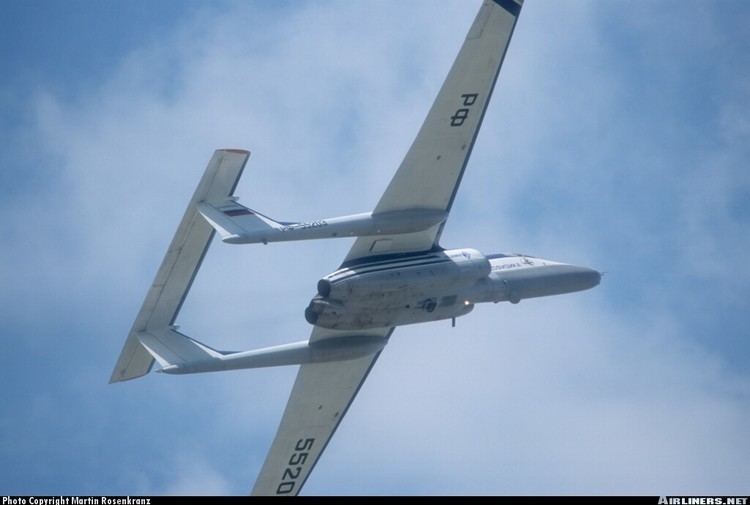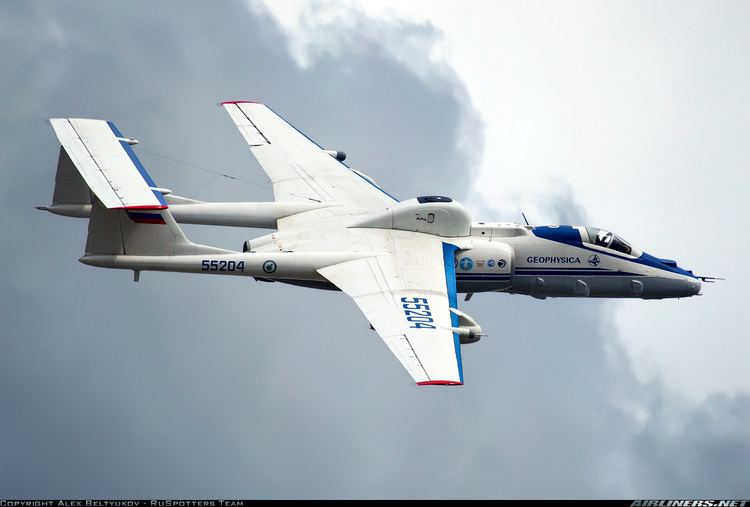Top speed 750 km/h Length 23 m | Wingspan 37 m First flight May 26, 1982 | |
 | ||
Myasishchev m 55
The Myasishchev M-55 (NATO reporting name: Mystic-B) is a high-altitude geophysical research aircraft developed by OKB Myasishchev in the Soviet Union, similar in mission to the Lockheed ER-2, but with a twin boom fuselage and tail surface design. It is a twin-engined development of the Myasishchev M-17 Stratosphera with a higher maximum take-off weight.
Contents
- Myasishchev m 55
- Design and development
- Subject 34
- M 17 Stratosphera
- M 55 Geophysica
- Variants
- Operators
- Specifications M 55
- References

Design and development

During the 1950s and 1960s the United States instituted several programs using high-altitude reconnaissance balloons, released over friendly territory to ascend into the jetstream and be transported over the Soviet Union and People's Republic of China.
Subject 34

To combat these high-altitude balloons, Myasishchev proposed Subject 34 a single-seat turbojet-powered twin-boom high-aspect-ratio aircraft, nicknamed Chaika ("Seagull" in Russian) due to its anhedral wing design. Armament of the single-seat balloon interceptor was to have been two air-air missiles (AAM) and two GSh-23 cannon with 600rpg in a dorsal turret. Before Subject 34 could be developed into operational hardware, the threat receded due to the success of the Keyhole reconnaissance satellites of the Corona program and the emergence of the Lockheed A-12.

The first prototype of Subject 34 was completed in secret at the Kumertau helicopter plant in Bashkirya, but whilst carrying out taxi tests, in December 1978 piloted by K. V. Chernobrovkinand, the prototype Chaika lifted off to avoid hitting snow banks and was destroyed after hitting a hillside in zero visibility.
M-17 Stratosphera

The design of the Chaika was adapted as a reconnaissance aircraft and emerged as the Myasishchev M-17 Stratosphera with a revised airframe, including straight tapered wings with 2° 30' anhedral (0° at 1g), shorter fuselage pod and unreheated Kolesov RD-36-51 turbojet engine. Flown for the first time on 26 May 1982, the M-17 prototype (regn CCCP 17401) was soon allocated the NATO reporting name Mystic-A and was used for investigating the Ozone layer over Antarctica in 1992.

The M-17 also set a total of 12 FAI world records, 5 of which still stand. On 28 March 1990, M-17 CCCP 17401 piloted by Vladimir V. Arkhipenko set an altitude record of 21,830 m (71,620 ft) in class C-1i (Landplanes: take-off weight 16 000 to 20 000 kg).
M-55 Geophysica
The M-17 balloon-interceptor-based model was terminated in 1987 and replaced by the M-17RN, later known as the M-55 Geophysica, which was dubbed by NATO Mystic-B. First flown on 16 Aug 1988, the M-55 airframe was revised further with a longer fuselage pod, housing two Soloviev D-30-10V un-reheated turbofan engines, shorter-span wings and comprehensive sensor payload.
The M-55 set a total of 15 FAI world records, all of which still stand today: On 21 September 1993, an M-55 piloted by Victor Vasenkov from the 8th State R&D Institute of the Air Force named after V. P. Chkalov at Akhtubinsk reached a class record altitude of 21,360 m (70,080 ft) in class C-1j (Landplanes: take-off weight 20,000 to 25,000 kilograms (44,000 to 55,000 lb)).
A dual-control version, the M-55UTS, was developed by adding a second cockpit behind the original, displacing some avionics and/or sensor payload.
A number of M-55 Geophysica remain in service, performing in research roles; one M-55 took part in a study of the Arctic stratosphere in 1996–1997, with similar experiments performed in Antarctica during 1999.
An Irish-headquartered company Qucomhaps, with a focus on South East Asia, has entered a 1-billion USD deal to use the M-55 as a high-altitude platform station for digital communications.
Variants
Operators
Specifications (M-55)
Data from The Osprey Encyclopedia of Russian Aircraft 1875–1995
General characteristics
Performance
